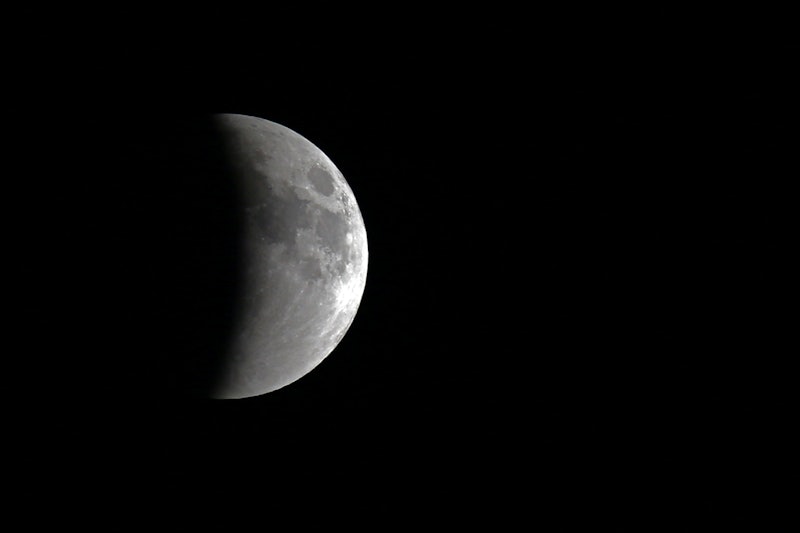Life

Get ready to start working for the weekend, because on Friday, Feb. 10, three simultaneous celestial events will make for some exciting stargazing. What's more, you don't need a telescope to enjoy the show — astronomy buffs wondering how to see the Snow Moon, lunar eclipse, and Comet 45P will be happy to learn that you can get the best view by following just a few simple steps.
The February's full moon will be the second of 2017, hitting its peak at 7:33 p.m. EST. Also known as the Snow Moon or Hunger Moon, this bright lunar event often coincides with some of the year's most brutal weather. The unique monikers given to February's full moon by North Eastern Native American tribes were symbolic of the heavy snowfalls, and food shortages that often plagued the month.
The penumbral eclipse that coincides with the full moon, however, will we be a touch more difficult to detect. As Bustle's Megan Grant noted during the last penumbral lunar eclipse, which occurred in September of 2016, there are three types of eclipses — partial, total, and penumbral — with "penumbra" referring to a specific part of the shadow at play here. "In the case of the penumbral lunar eclipse," wrote Grant, "the Earth blocks some of the sunlight and stops it from hitting the moon. As a result, the Earth covers part of the moon with its penumbra."
And if all that isn't enough to get you pumped for Friday, Comet 45P, which has been visible with use of a telescope or binoculars for the past two months, will be incredibly close to reaching its closest point to Earth. Also known as the New Year Comet, it will be about 7.4 million miles away from Earth on Feb. 11 — so even though it won't be quite there on Feb. 10, it'll still be pretty close at the time of the Snow Moon and the penumbral lunar eclipse. This ball of water, dust, and ice only comes around every five and a quarter years, so this alignment is extra special.
Just one of these special phenomenons would be thrilling, but all three at the same time must mean something, right? So, here are a few key pointers as to how to view the Snow Moon, penumbral lunar eclipse, and New Year Comet this weekend:
1
Note Your Calendar
While the New Year Comet has been visible for months now, you will want to be sure to look up on Friday, Feb. 10, when all celestial events hit their peak. We tend to be forgetful at the end of a busy week, so be sure to set an alert on your phone, circle the date in your Filofax, or do some visualization so you don't miss it!
2
Skip Happy Hour
After work drinks will have to be postponed this Friday, as the celestial events will be aligning perfectly right around then. The full moon is set to rise between 5 and 5:30pm EST on Friday, reaching perfect fullness at 7:33 p.m. The penumbral eclipse will begin at 5:34 p.m. EST around moonrise, and ends at 9:55 p.m. Its shadow won't be visible until approximately an hour and a half before mid-eclipse at 7:44 p.m. The faint blue-green glow of the comet should be visible around this time as well, though it won't make its closest approach to Earth for a few hours, around predawn on Feb. 11. Pack some snacks and a pair of binoculars to maximize the experience.
3
Find The Perfect Place To Stargaze
The best view of the night sky is usually from a dark location, away from the light pollution of any cities. If you can't escape the city in time, head up to your roof (if it's safe and you have roof access where youlive) or wherever you can see the widest expanse of sky. Visibility depends on weather conditions, so a clear night will give you the most bang for your buck. Be sure to bundle up, because they don't call it the Snow Moon for nothing!
4
Look Up!
Lay down on your back and take in the entirety of the night sky. The eclipse will begin to be visible on the moon's left side around 6:44 p.m., reaching its max at 7:44 p.m. The comet will be approaching the constellation Hercules around that time, reaching it about midnight. You can see it with your own two eyeballs, or scan the sky with binoculars for it's "blue-green 'head' and fan-shaped tail," as the Telegraph describes it.
Now we just have to make it through the rest of the week...